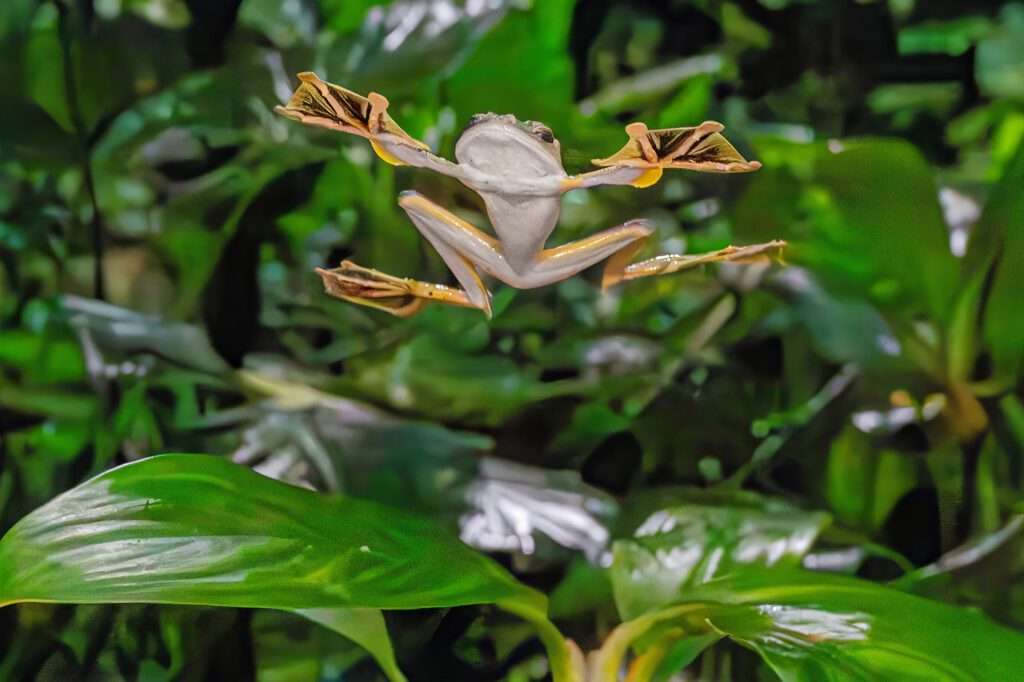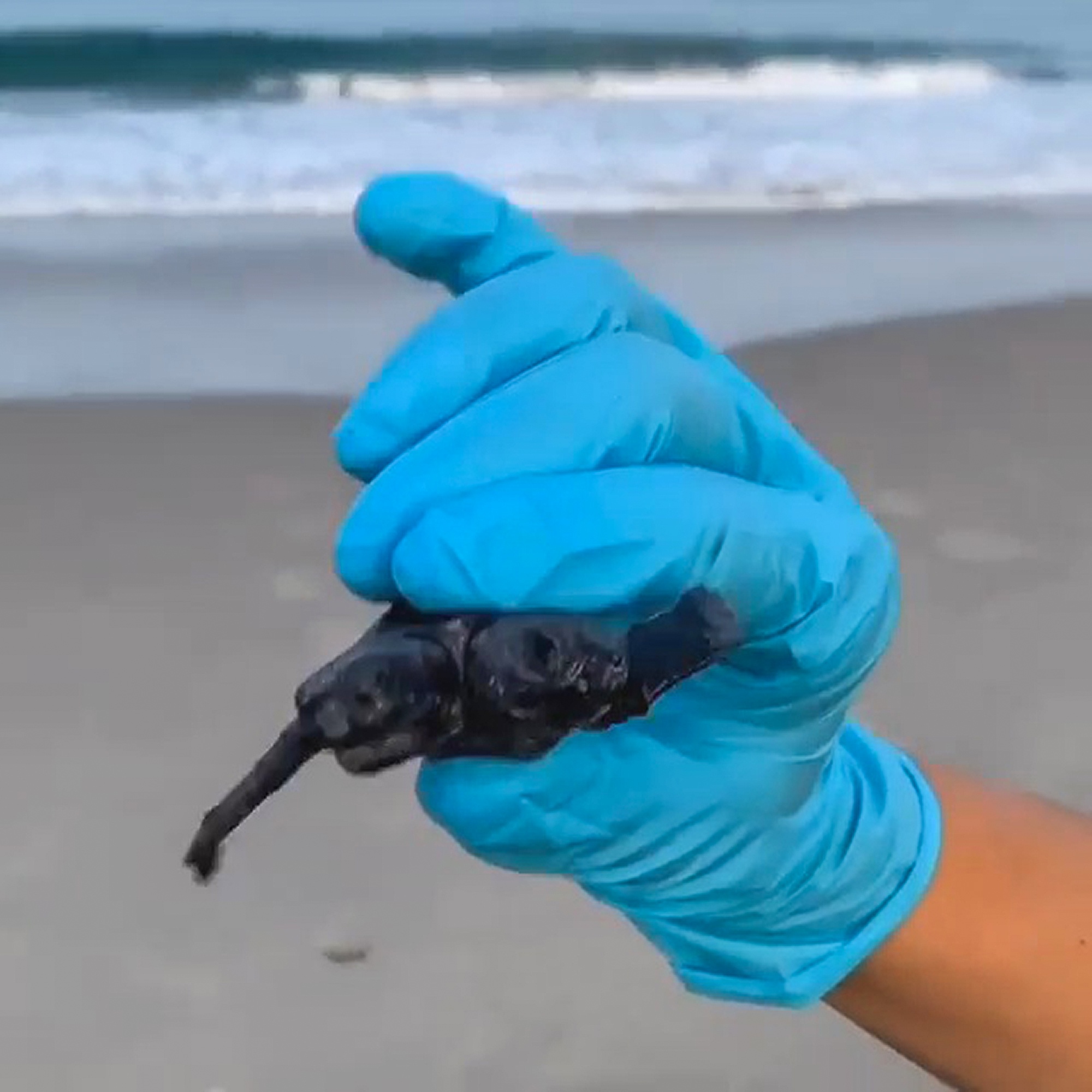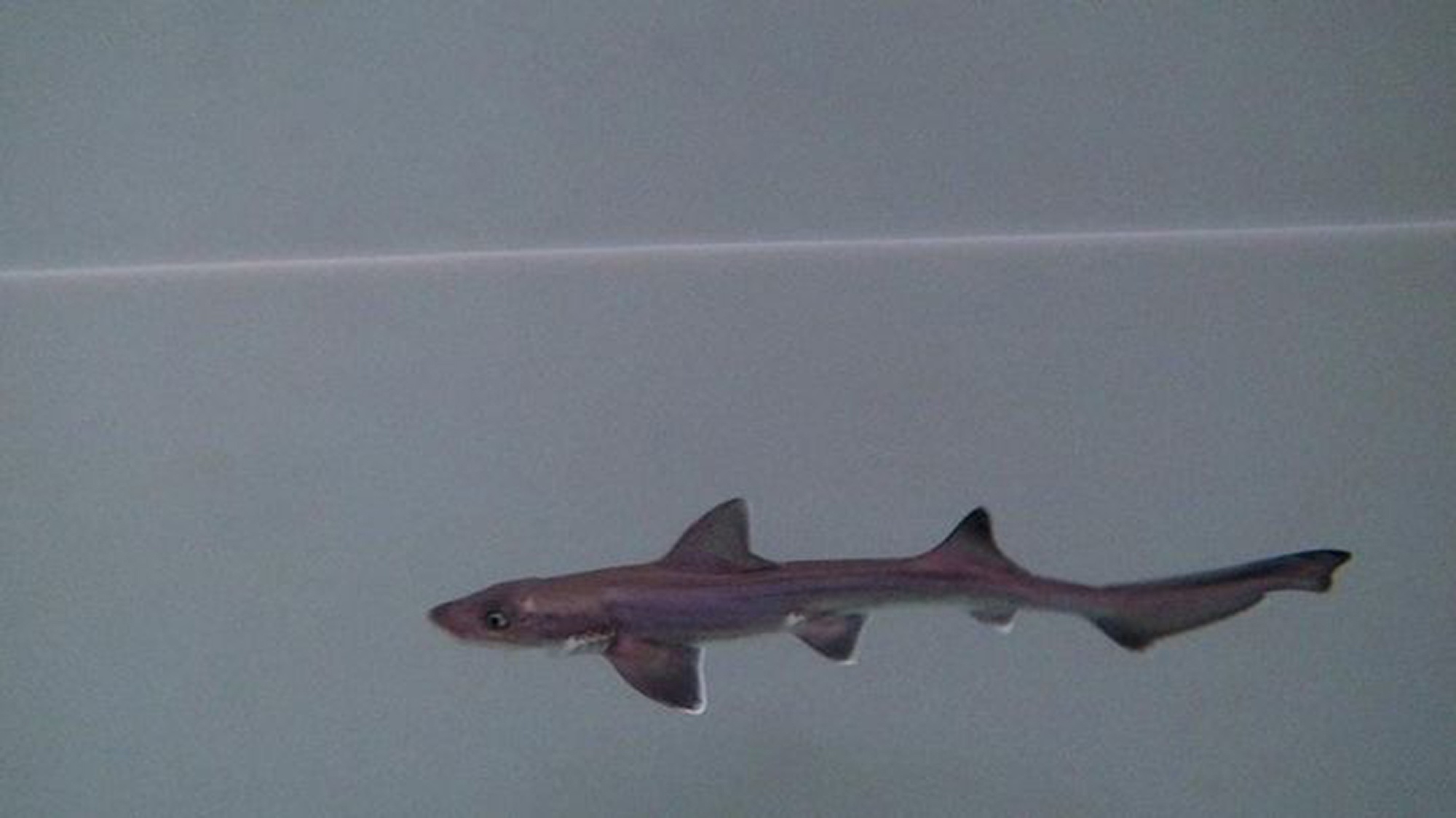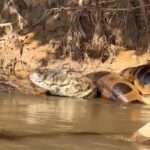New research by the world’s oldest zoo has revealed that a species of flying frog disguises itself as poo in order to avoid being eaten by predators.
The study, led by the University of Vienna, Austria and the Schoenbrunn Zoo, showed that the offspring of the Wallace’s flying frog (Rhacophorus nigropalmatus), also known as the gliding frog, camouflage themselves as faeces to steer clear of predators.
Researcher Susanne Stueckler said in a statement obtained by Newsflash: “The young frogs probably rely on the fact that they will be seen, but considered something inedible.”
The astonishing animals are known for taking massive leaps from one branch to another, an ability enabled by splaying their four webbed feet.
Additionally, the membranes between their toes and loose skin flaps on their sides catch the air as they fall, helping them to glide even more than 50 feet in distance.
In Schoenbrunn’s 800-square-foot rainforest house, the scientists tested whether birds are more attracted to certain colours in nature.

They determined that young red-coloured Wallace’s flying frogs were triggered the most, but the attack rate declined by 50 per cent when they covered themselves in white spots.
Schoenbrunn Zoo said: “This showed that the white dots camouflage an otherwise very conspicuous individual and deceive predators.”
When fully grown the species lose the red colour and the ability to form white dots, and turn emerald green.
It is not yet clear why they undergo such a complex colour change throughout their lives.
The scientists suspect that the frogs adapt to different habitats depending on their life stages.

According to the research team, adult frogs are well adapted to life in treetops due to their extensive green colour. Young frogs, in turn, inhabit the lower tree layers.
Zoo director Stephan Hering-Hagenbeck said: “As a scientifically managed zoo, research is an important part of our work, alongside recreation, education and species protection.
“We are very pleased that we are contributing to a better understanding of the animal world through the great findings we are developing in Schoenbrunn.”










